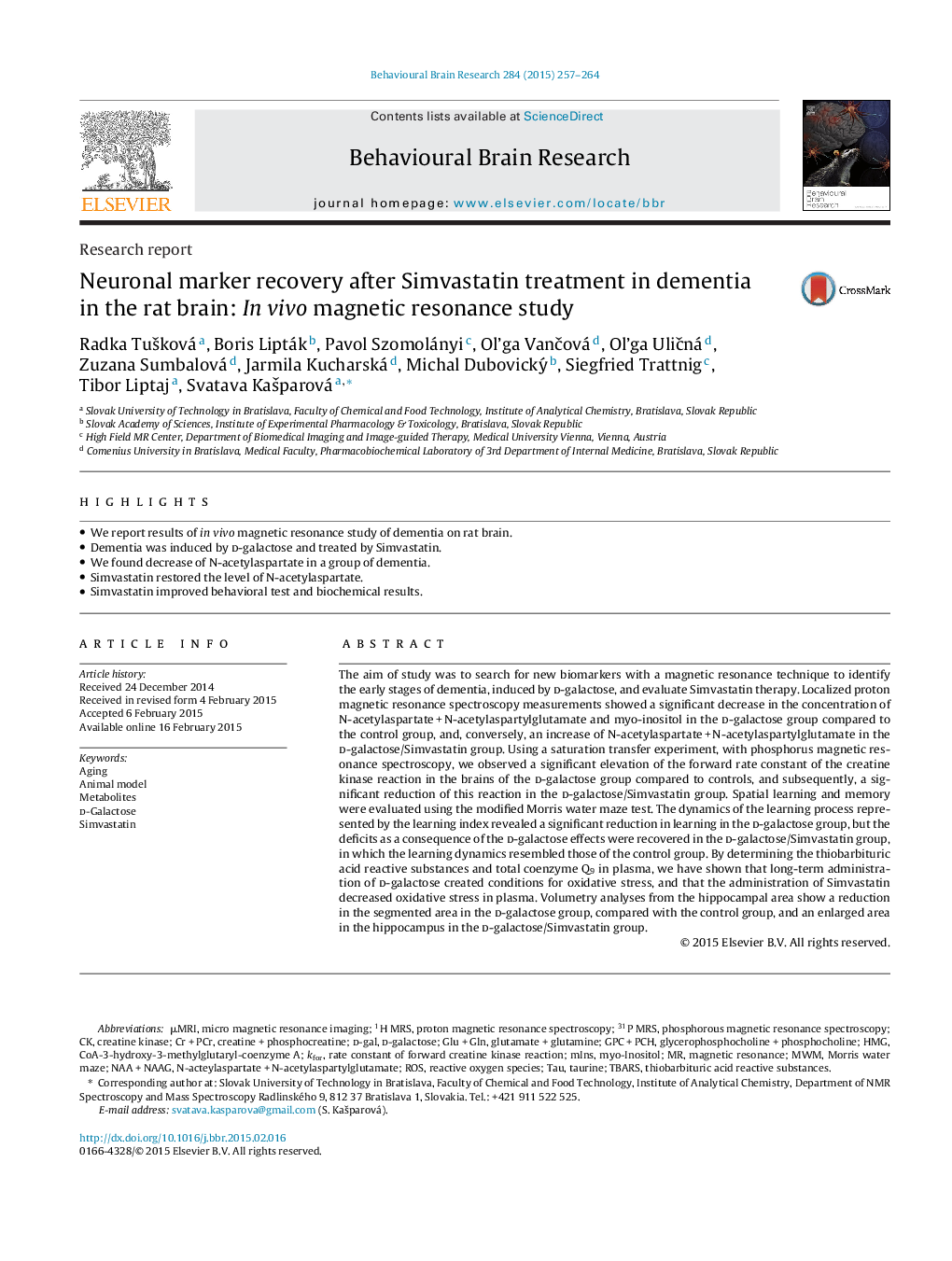| کد مقاله | کد نشریه | سال انتشار | مقاله انگلیسی | نسخه تمام متن |
|---|---|---|---|---|
| 6256820 | 1612948 | 2015 | 8 صفحه PDF | دانلود رایگان |

- We report results of in vivo magnetic resonance study of dementia on rat brain.
- Dementia was induced by d-galactose and treated by Simvastatin.
- We found decrease of N-acetylaspartate in a group of dementia.
- Simvastatin restored the level of N-acetylaspartate.
- Simvastatin improved behavioral test and biochemical results.
The aim of study was to search for new biomarkers with a magnetic resonance technique to identify the early stages of dementia, induced by d-galactose, and evaluate Simvastatin therapy. Localized proton magnetic resonance spectroscopy measurements showed a significant decrease in the concentration of N-acetylaspartate + N-acetylaspartylglutamate and myo-inositol in the d-galactose group compared to the control group, and, conversely, an increase of N-acetylaspartate + N-acetylaspartylglutamate in the d-galactose/Simvastatin group. Using a saturation transfer experiment, with phosphorus magnetic resonance spectroscopy, we observed a significant elevation of the forward rate constant of the creatine kinase reaction in the brains of the d-galactose group compared to controls, and subsequently, a significant reduction of this reaction in the d-galactose/Simvastatin group. Spatial learning and memory were evaluated using the modified Morris water maze test. The dynamics of the learning process represented by the learning index revealed a significant reduction in learning in the d-galactose group, but the deficits as a consequence of the d-galactose effects were recovered in the d-galactose/Simvastatin group, in which the learning dynamics resembled those of the control group. By determining the thiobarbituric acid reactive substances and total coenzyme Q9 in plasma, we have shown that long-term administration of d-galactose created conditions for oxidative stress, and that the administration of Simvastatin decreased oxidative stress in plasma. Volumetry analyses from the hippocampal area show a reduction in the segmented area in the d-galactose group, compared with the control group, and an enlarged area in the hippocampus in the d-galactose/Simvastatin group.
Journal: Behavioural Brain Research - Volume 284, 1 May 2015, Pages 257-264